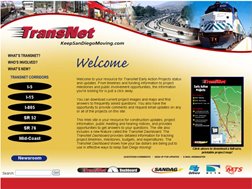The Texas Transportation Institute has just (November 2011) released its annual Congested Corridors Report.
Unfortunately, Western Washington made almost all the Top 40 hits list!
The Congested Corridors Report (2010 data) includes an analysis of 328 specific (directional) freeway corridors in the U.S.
- 6 % of national urban freeway lane-miles
- 36% of urban freeway delay
- 33% of urban freeway truck delay
The Report measures reliability (how much the problems change day to day), extra travel time, increased fuel consumption and congestion costs.
The stated purpose of the study is to understand how, when and where congestion occurs – as a tool to understanding what can be done. Their conclusion: all the potential congestion-reducing strategies are needed: capacity and productivity.
Here’s how Washington State
Reliably Unreliable
Unreliability is the most disturbing problem. A predictable transportation system is important to motorists and goods movers. Reliability describes the extra time you add to each trip to ensure you will be on time – when you simply can’t be late. The Federal Highway Administration has been moving towards a greater focus on performance management in its programs.
Area Corridor Endpoints Length Natl Rank
Congestion Leaders
This category ranks corridors by the annual delay per mile. Considered are annual gallons of waster fuel and the annual congestion costs associated with fuel and delay.
Area Corridor Endpoints Length Natl Rank
This category shows corridors with the largest delay per mile in the morning peak (6am to 10 am). It uses the same measures as the Congestion Leaders category, but only measured during the morning peak.
Area Corridor Endpoints Length Natl Rank
This is the category for the worst afternoon peaks (3 pm to 7 pm). Again, it uses the same measures as the Congestion Leaders category, but only for the afternoon hours.
Area Corridor Endpoints Length Natl Rank
Lunch Breaks
This is the midday hours congestion category, for the 10 am to 3pm time period. Again, it uses the same measures at the Congestion Leaders category, but only for this midday time.
Area Corridor Endpoints Length Natl Rank
Area Corridor Endpoints Length Natl Rank
Weekend
This is the rarest category, as weekend congestion is rarely a stop-and-go situation on Saturdays and Sundays. It’s usually occurring at major shopping areas, sporting venues and other recreational activity centers. Like before, the measures are the same as for Congestion Leaders, but based on traffic during the weekends.
Area Corridor Endpoints Length Natl Rank
Area Corridor Endpoints Length Natl Rank
Trucking
This category includes the amount of daily truck travel on each corridor. While it uses the same measures as the Congestion Leaders category, it is based entirely on truck travel.
Area Corridor Endpoints Length Natl Rank
One-Hit Wonders
Their (last and final) fanciful category includes urban areas that have only one or two corridors included in the Congested Leaders category. Unfortunately, our area did not make this list.








